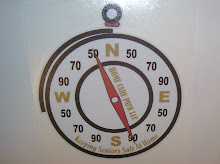In autumn the male plants release pollen in to the air in order to reproduce. When the pollen and other allergy triggers are released, the bodies immune system sees them as foreign invaders. Ragweed is another autumn culprit. Allergic rhinitis more commonly known as hay fever is the bodies initial response to pollen and other substances.
Hay fever like symptoms are triggered when the immune system views harmless pollen or ragweed as dangerous substances that are attacking the body. The system over reacts by releasing chemicals in to the blood stream that inflame the lining of the nasal passages, sinuses, and eyelids which leads to sneezing. Fluid flows to push the pollen out, and the inner nose swells to prevent pollen entry. The immune system is responding in a way to protect the body from a substance that means it no harm.
The first allergy symptoms to show are itchy nose, mouth, eyes, problems with smell, runny nose, sneezing, tearing eye. Symptoms that can follow include nasal congestion, coughing, clogged ears, circles under eyes, puffiness around eyes, irritability, headache, memory problems, and slowed thinking. The constant flow of fluid from the nasal passages can irritate the skin below the nose.
To prevent autumn allergy symptoms begin by spending more time indoors. This reduces your bodies exposure to the cause of the allergy. Antihistamines which are available over the counter block the natural chemicals that the body produces that cause allergy symptoms. Home Care Path www.homecarepath.com staff assist seniors with shopping and errands. Loratadine, Claratin is an over the counter (no prescription needed) antihistamine. Over the counter decongestants are also used.
Tuesday, August 24, 2010
Subscribe to:
Post Comments (Atom)

No comments:
Post a Comment